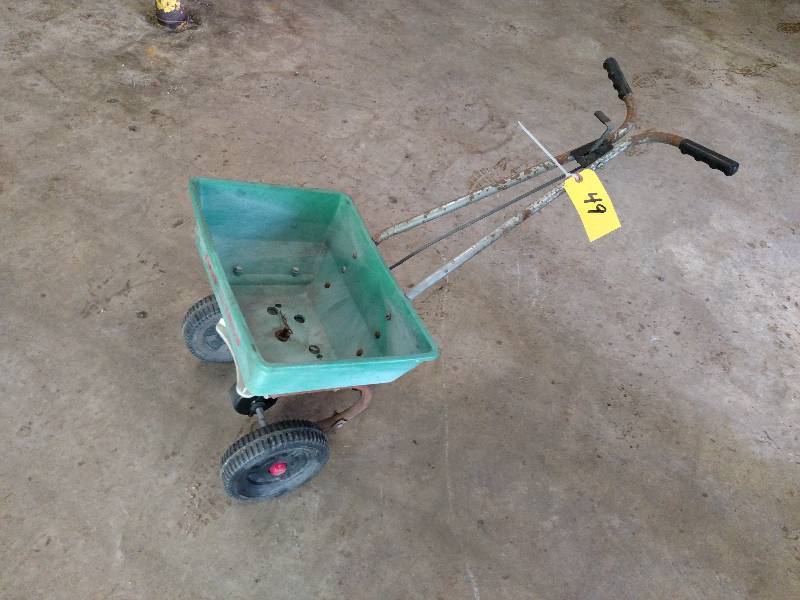
Main Types of Spreaders
Spreaders run from small, hand-held tools to heavy-duty, lawn-tractor models. But they come down to two main types: broadcast, also known as rotary, and drop spreaders. Home walk-behind spreaders usually have two wheels — and bigger wheels improve maneuverability. Both broadcast and drop spreaders have bucket-like hoppers with adjustable holes that control the volume of seed that goes through. However, the two types differ in how they distribute seed and what lawn types suit them best.
Broadcast Spreaders
Red Devil Spreader Grass Seed Settings Manual
Broadcast spreaders scatter or “broadcast' seed in a fanlike manner over a wide area, with the help of a rotating piece beneath the hopper holes. The size of the fan depends on hole size and your speed. Distribution thins as it gets farther from the spreader, so passes back and forth across the lawn must overlap to uniform seed across the full arc. A general rule is that the “effective width' of the spread is roughly equal to 75 percent of the total reach.2 If your spreader's arc measures 12 feet across to its outermost points, the effective coverage is 9 feet wide. Passes across the lawn should be 9 feet apart.3 For best coverage, set the spreader at 50 percent, and then spread your seed two ways in a crosshatch pattern.
Points to consider with broadcast spreaders include:
- They suit large lawns and cover wide areas efficiently.
- They require more skill to get uniform coverage.
- They lack precision in tight spots and around obstacles.
- They're more affected by wind, especially with lightweight products.
- They can scatter seed or products out of bounds. (Some state laws require cleanup of fertilizer from sidewalks or other hardscapes.1)
- They cover more ground in less time.
Red Devil Spreader Grass Seed Settings Diagram
Spreader settings for Scotts® Lawn Care products can be found on the product package. You can also find spreader settings on our product information pages (Lawn Food, Grass Seed, Weed Control, and Insect, Grub & Disease Control). Spreader settings can be found on the 'Details & Usage' tab on the product information pages. If you choose to use Scotts tall fescue seed mix and a Scotts rotary spreader, use a setting of 7 1/2 for overseeding and a setting of 18 when establishing a new lawn. When using their drop spreader, use a setting of 9 1/2 for overseeding and 18 for new seeding. Agway also offers a tall fescue grass seed. Spreader is the easiest to distribute in large areas and ensures even coverage. Growin Green feeds slow and steady for uniform growth, one application lasts 3 to 4 months. It can be applied during the spring, summer or fall. Spreader settings- Rotary: Ames Earthway 23 Red Devil 17 Scott’s Easy Green 30 Scott’s Accu Green 8 Sears 5.

